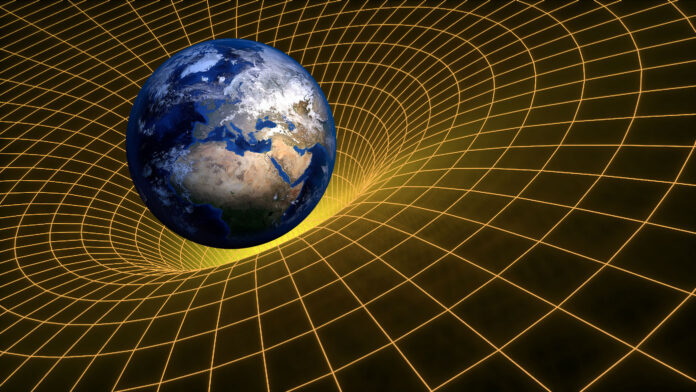If you were to drop a stack of antimatter, would it fall up or down?
Einstein’s theory of general relativity predicts that antimatter would fall down in the gravitational field of the Earth, and this is what most physicists would expect the result to be. But despite this being our best description of gravity, we know there are gaps in our understanding. In fact, Einstein’s theory predicts its own failure at extremes like spacetime singularities inside black holes.
There is also some speculation on whether the opposite might be true. We can’t explain the expansion and geometry of the universe with what we know about gravity unless there are huge amounts of mass that we can’t see. We explain this through the concepts of dark energy and dark matter that interact with gravity and shape the bright universe. These forces are mysterious and there is still a lot we don’t have figured out.
One intriguing possibility is that antimatter may behave differently than matter when it comes to gravity, and that matter and antimatter might even repel each other. That could help explain the shape and expansion of the universe without the existence of dark energy.
But nothing is truly known until it’s been observed. And it’s really hard to observe antimatter because the instant it collides with normal matter, both are annihilated.
The ALPHA collaboration is an international team created to examine the behaviour and properties of antimatter. The results of their first test of antimatter in freefall were published this week in Nature.
The study was part of an international effort by the ALPHA collaboration, which included authors from several Canadian institutions: TRIUMF, the University of British Columbia, York University, the University of Calgary, Simon Fraser University, and the British Columbia Institute of Technology.
For their study, they needed to make antihydrogen to observe, as this is the smallest neutral atom that can be made. Gravity is weakest of the four known forces that act on masses, and so any electrical charges would make it impossible to observe the effects of gravity.
As they’ve done previously, they made antiprotons in a particle accelerator and antielectrons (positrons) through radioactive decay. These are first held separately, and their charges make them relatively easy to trap in a near perfect vacuum, keeping them away from matter using electric fields. When ready, the ALPHA researchers nudge the two together to create low-energy antihydrogen atoms.
Once combined, the resulting antihydrogen is charge neutral, and the electric fields can no longer hold them. Although most of the antihydrogen will strike the walls of the trap and be destroyed, strong electromagnets take advantage of the weak magnetic properties of antihydrogen to hold onto the rest. For this study, the team constructed a vertical trap several metres tall to hold the antihydrogen.
Inside the trap, the team took their stack of antihydrogen atoms and slowly released them, gradually ramping down the current in their electromagnets in a synchronized and symmetrical fashion so that the antihydrogen would be free to escape from the top or bottom. The positions of the subsequent annihilation events could then be measured to see if they fell up or down.
The antihydrogen observed is still energetic enough that we expect some to fly out in each direction. Even stacks of regular hydrogen would be expected to have a distribution under gravity, with about 20 percent of atoms coming out the top, and the rest falling out the bottom. So the results were compared against simulations for hydrogen under the same conditions.
But we also know that magnetic fields, which the team also used as part of the antihydrogen trap design, affect their motion. To counteract the effects of any stray magnetic interference, they repeated the same test with a magnetic push of varying strengths in either direction.
Under all the conditions tested, the antihydrogen behaved in a pattern similar to the results simulated for regular hydrogen — tending to fall down under the influence of gravity like normal matter.
The strength observed was calculated at 75 percent of what matter experiences, give or take the 29 percent error that could come from statistical, systematic, or simulation sources.
Although the match to the simulated values wasn’t perfect, the evidence is consistent with an attractive gravitational force and rules out the possibility of a matter-antimatter repulsive force.
The next steps include layering on techniques like laser cooling to further slow antihydrogen down to take even more precise measurements in future studies. This will allow the team to better measure the exact acceleration rate and find out if the pull of gravity is the same for antimatter as it is for matter.
This is an exciting moment in particle physics that gives us insight into the nature of the universe.








































